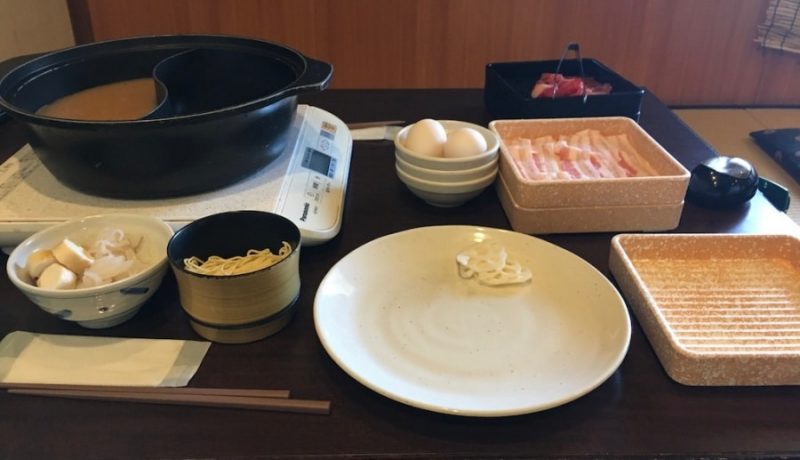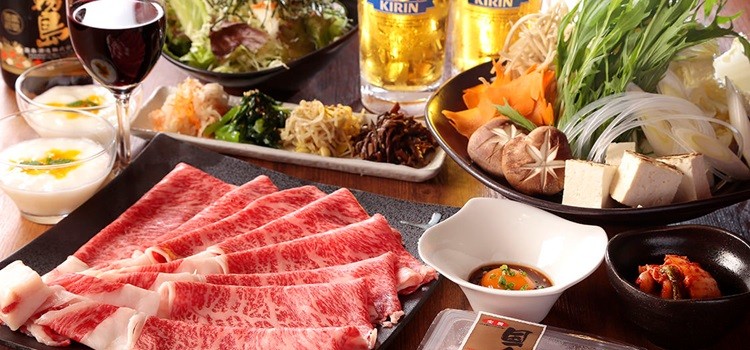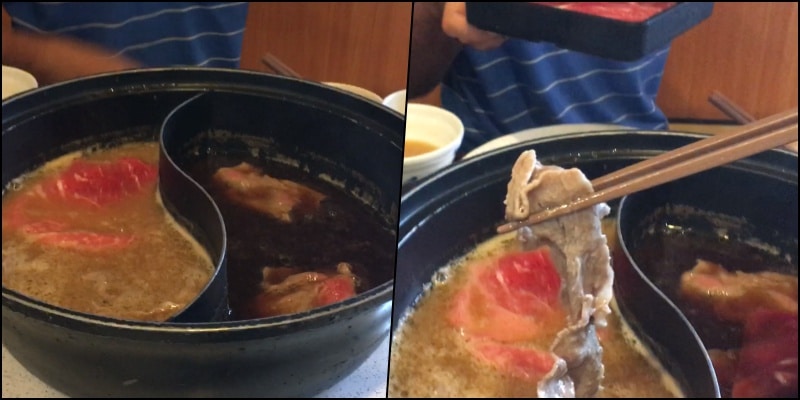Do you know a recipe in Japanese cuisine that consists of dipping meat and food to cook in a pan and sauce? In this article, we are going to talk about Shabu-shabu, a dish that originated in China, but that the Japanese adopted and adapted.
The shabu-shabu (しゃぶしゃぶ) Japanese dish is made in a specific pot. The ingredients are brought to the table raw and cooked during the meal. Basically, the dish consists of thin slices of meat and fresh vegetables, cooked together. The dish was introduced to Japan after the Second World War. Popular both among soldiers and the Chinese who came to Japan.
Table of Content
information about shabu shabu
The name shabu shabu was created by a restaurant owner Suehiro, in Osaka. He saw one of his employees washing a towel using a basin. Thus he associated this with the immersion movement of the meat in hot water. Naming the dish shabu shabu because of the onomatopoeia of the water splashing.

The pot used to prepare it contains a chaminé. Thus, the heat that escapes does not burn the hand of the person cooking the meat. Various types of meat and vegetables can be used, varying from region to region.
You can use various ingredients in Shabu Shabu such as pork, beef and chicken, onions, Chinese cabbage, mushrooms, mizuna (mustard), tofu, slices of mochi, kuzukiri (noodles) which are cooked and dipped in a multitude of sauces.
There are other concepts and ways to prepare food in Japan through cooking in sauces like the famous Nabe and even Sukiyaki, but each has its differences that we will also see at the end of this article. Now, without further ado, let's go to the Shabu Shabu recipe.
RECIPE - How to prepare Shabu shabu
As said, there are many variations of this dish, which can be changed and modified, depending on the region and personal taste. Let's teach one of these variations.
Ingredients:
(broth and stew)
⦁ 2 liters of water;
⦁ 2 dried sardines (dashiko);
⦁ 500 g of tofu;
⦁ 5 leaves of napa cabbage;
⦁ 10 stalks of green onion;
⦁ 7 whole shiitake mushrooms;
⦁ 100 g of bean sprouts (moyashi);
⦁ 300 g of flank steak in slices;
⦁ 1 package of ready-made fish stock (hondashi);
⦁ 200 g of shimeji mushrooms;
⦁ 10 stalks of watercress;
⦁ 1 sheet of kombu seaweed;

How to prepare SHABU SHABU
1. Wash the vegetables, mushrooms, and sprouts;
2. Cut the leaves of the Swiss chard, green onion stems, and tofu into small square pieces;
3. Cut the stems of the shiitake mushrooms;
4. The watercress should be cut into small strips;
5. Alternate the vegetables, mushrooms, sprouts, and tofu on a plate;
6. For the broth, put water in a pot with half a sheet of kombu.
7. Add a packet of hondashi and 2 dried sardines;
8. With the ingredients in the water, start cooking;
9. When it boils, lower the heat a bit until the broth becomes stronger;
10. Remove and separate the broth, keeping it over high heat like a fondue.
Sauce to accompany SHABU SHABU
Ingredients:
⦁ 100 ml of sake;
⦁ 50 ml of soy sauce;
⦁ 50 ml of rice vinegar;
⦁ 4 level tablespoons of sugar;
⦁ 200 g of soybean paste;
⦁ 1 level teaspoon of Aji-no-moto;
⦁ 100 ml of shabu shabu fish broth;
Preparation mode:
1. Mix all the ingredients in a bowl.
2. Mix it with the warm shabu shabu fish broth, until it becomes pasty in appearance;
3. Divide the sauce into bowls for guests to use to season the meat.
How to serve Shabu shabu
The fish broth should be placed in a fondue pot, on high heat, to cook the meat. Everyone should pick up the item they prefer using their own chopsticks, dipping their chosen ingredient into the broth. Take it out when you think it's done.

Tofu just wait for it to hydrate and heat up, then you can remove it. Each person should receive a container of sauce, and rice to go with it. After eating all the food, they usually mix the remaining soup with rice, ramen or udon, this action is called Shime.
If you prefer to visit a Shabu Shabu restaurant, your job will be much easier. You will be served with a large pot that can sometimes be split in two. You choose the sauces and the meats and vegetables you prefer and dip for a short time.
You must remove the meat with chopsticks and dip it in another sauce to finally consume the food. Not all vegetables or meats cooked in the pan need to be dipped in the second sauce. Sometimes it's good to have a basic understanding of which sauce to choose.
What is the difference between Shabu Shabu and SukiyaKI?
Both Nabe and Shabu Shabu are thin slices of meat and vegetables cooking in a pan, so what's the difference between Shabu Shabu and Sukiyaki? Sukiyaki is a dish of Japanese origin and different from shabu shabu, the meat is cooked completely, sometimes even grilled before taking it to the sauce.

Both can be dipped in the sauce, but the main difference is that Sukiyaki is often cooked in a skillet style and offers a rich flavor, seasoned with soy sauce and sugar, while shabu shabu is a hot pot filled with sauce and looks more with a soup.
The similarities may be greater or lesser depending on how the two recipes are prepared. It is worth remembering that both recipes have numerous versions from different regions. The best way to differentiate the two recipes is that one was entirely made in Japan while the other was adapted from Chinese cuisine.
WHAT IS THE DIFFERENCE OF SHABU SHABU AND NABE?
The word Nabe literally means pot, so both Sukiyaki and Shabu Shabu fall into the category of foods that are cooked in a pot like Oden, motsunabe, yodofu, yosenabe, chankonabe, and others.

Nabe usually refers to any dish cooked in a pan, but unlike Shabu Shabu the term Nabe can be a simple traditional meal where we put rice, noodles, gyoza, moyashi, meat and other vegetables in the pan.
I hope you enjoyed this little article, we'll update you soon with news. Thanks for the comments and shares.
